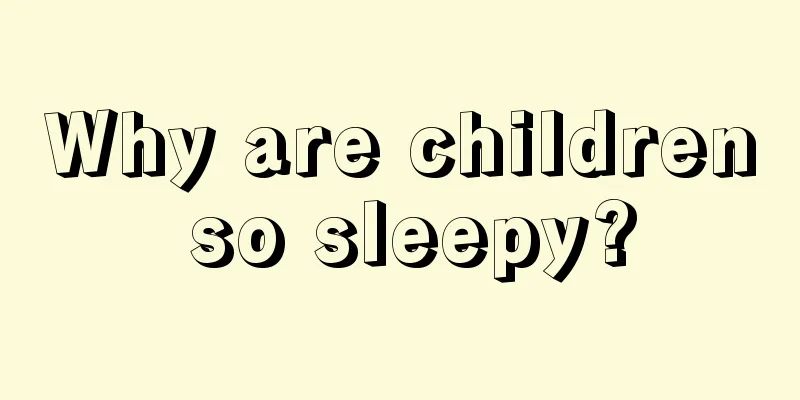How to treat white spots on children's faces, mothers must know

|
Children have always been the treasures of their parents, and their every move is highly valued by their parents. So what is going on when white spots suddenly appear on children’s faces? In fact, there are four problems that can cause white spots on children’s faces. Let’s take a look at the four diseases and treatments that cause white spots on children’s faces! 1. Simple pityriasis This is common in children. The skin lesions are round or oval pink macules of varying sizes with unclear edges. After 1 to 2 weeks, the redness fades, leaving light spots. The surface is dry with a few small grayish-white scales. The radius of such spots is about 0.5 cm, and the edges of such spots are relatively clear. Usually the abdomen is above our neck, upper arms, back or even torso. Most children with this disease have no subjective symptoms, and a few have mild itching. The course of the disease is chronic and may not heal for several days or years, and then gradually disappear without leaving any trace. The cause of this disease is unknown. It may be related to dry skin, strong sunlight exposure, or a manifestation of seborrheic dermatitis, or related to viral, fungal, or streptococcal infection. However, there is currently no definite evidence in the medical community to prove it. Some experts also believe that the disease is related to nutritional metabolism. Treatment For local white spots, we recommend the use of 5% sulfur cream, hydrocortisone, etc. for treatment. Add service Multiple vitamins and trace elements (mainly zinc), etc. 2. Vitiligo Vitiligo is a rather complex skin disease. The disease can occur in infants to the elderly, and about half of the cases occur before the age of 20. Vitiligo is a primary, localized or generalized skin depigmentation disorder caused by the dysfunction and loss of the tyrosinase system in the melanocytes of the skin and hair follicles. The skin lesions are without any pigment, vary in size and shape, and can occur anywhere on the body. They have clear borders, darker pigmentation at the borders, and the hair follicles within the spots turn white. The cause of vitiligo is still unclear. It is currently believed to be related to genetics, autoimmunity, mental and endocrine factors. Other theories include the melanocyte self-destruction theory, tyrosine and copper ion relative deficiency theory, etc., but the true cause needs further confirmation. Vitiligo is mostly curable. Commonly used drugs for the treatment of vitiligo include Corticosteroids such as betamethasone and dimethyl sulfoxide cream can be used externally, and Chinese medicines such as bakuchiol can be taken orally. If necessary, surgical treatment (also known as autologous epidermal transplantation) can be performed. 3. Anemic nevus This is a congenital hypopigmentation spot that is usually present at birth. Because the capillaries in the hypopigmentation spot are fewer than normal, when the affected area is rubbed, the surrounding skin becomes congested while the white spot remains the same. 4. Non-pigmented mole Onset is at birth or shortly after birth. The lesions are often distributed along the nerve segments, manifesting as localized or generalized hypochromic macules with blurred boundaries, jagged edges, and surrounding neuronal pigment hyperplasia halos, sometimes containing light brown millet to lentil-sized freckle-like spots. The children feel normal and the non-pigmented nevus remains unchanged throughout their lives. This is a type of neural nevus. The above is only an analysis of common pediatric skin diseases based on the skin characteristics of the child described in your letter. Since your letter did not mention the time when the child's local white spots appeared, based only on the skin lesions, I think we can first consider simple pityriasis, which should be able to be diagnosed in the local hospital. In addition, based on many years of clinical diagnosis and treatment experience, we found that most children mentioned in their medical history that they had a history of picky eating. Therefore, in addition to local application of topical medications, we also emphasize correcting children's picky eating. After taking multiple vitamins and trace elements (zinc, selenium, magnesium, etc.), all the children were cured. Problem Analysis: Vitiligo is a relatively common skin disease, which is prone to recurrence, which brings great difficulties to treatment. For example, in winter, because the weather is relatively dry and cold, it will have a certain impact on the recovery of the disease. At this time, it is necessary to do a good job of health care and nursing. Comments and suggestions 1. Wear soft clothes. In winter, people wear more clothes. If you don’t pay attention to your dressing, you are more likely to feel skin itching. This is because the constant friction between the body and clothes, and between clothes, generates static electricity, which irritates the skin. Therefore, in winter, you should try to choose pure cotton, silk and other clothes that are not easy to generate static electricity as underwear, shirts, etc. At the same time, you should also pay attention to the matching of clothes. If you wear a polyester shirt, don't wear an acrylic sweater. If you wear synthetic fiber clothes inside, you should not wear them outside. It is better to wear insulating polyester outerwear to prevent static electricity. 2. Perform skin exercises to strengthen skin exercise and enhance skin's adaptability to adapt to cold environments. You can take a cold water bath, air bath, sunbath, massage, etc., or insist on washing your face with cold water and wiping your body with cold water. |
<<: What are the causes of enuresis in children? This is the truth!
>>: What happens when a child has black stool?
Recommend
What should I do if my child has corns on his hands?
Any problem with a child is of great concern to p...
What are the harms of smoking among teenagers?
Many teenagers learn to smoke in school. When the...
Is it serious if a child has a nose bleed? How to treat it?
In the summer, people always have nose bleeding d...
Does my baby not eat normally mean he is zinc deficient?
Many parents are troubled by their children not e...
How much water should a seven-month-old baby drink every day?
Every baby has needs at different ages. Many chil...
What causes colic in children?
If a child suddenly has a stomachache, parents wi...
What is the reason for excessive sweating on children’s heads?
When the child is sleeping, parents often cannot ...
Children's fright symptoms
Newborn babies are most likely to be frightened w...
What is the massage therapy for chronic tonsillitis in children?
The incidence of chronic tonsillitis is still ver...
Side effects of pine pollen for babies
Pine pollen is familiar to many people. It can be...
What causes a child's heart rate to be too fast?
The heart is the most important organ in the huma...
How long does it usually take for a newborn to grow teeth?
Having a child in the family really adds a lot of...
Indigestion and diarrhea in children
With the continuous improvement of modernization,...
What to do if children don't grow taller
In daily life, we often hear many parents complai...
How to feed newborns, grasp the following four points
The diet of a newborn is very important, so how s...









